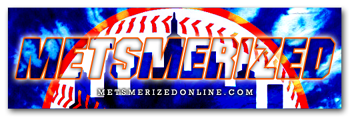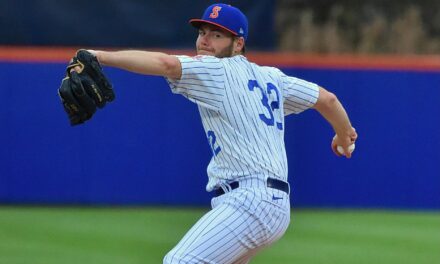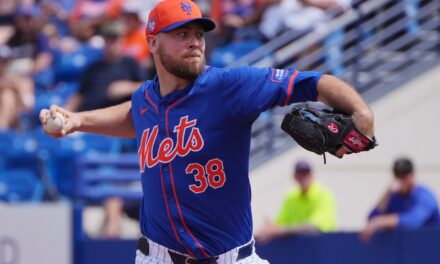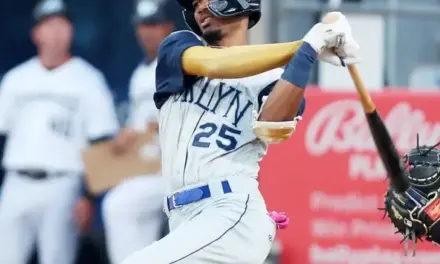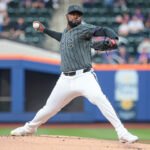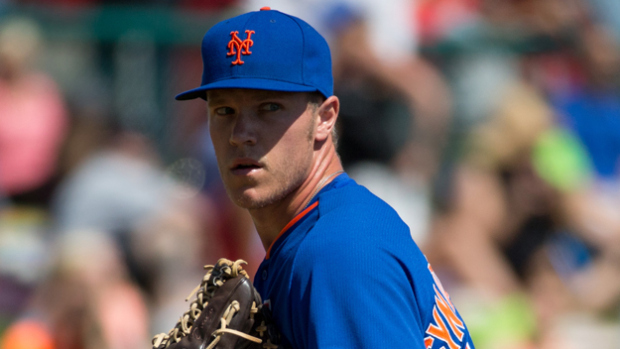
In a comprehensive organizational report for FanGraphs, former big-league scout, Kiley McDaniel analyzes and sums up over two dozen Mets prospects in a must-read article for you minor league aficionados.
1. Noah Syndergaard – Projects as a potential frontline arm and will get tossed into the MLB rotation group in spring training, but the Mets expect him to be the 5th-6th starter given the current roster. This means he’ll go back to Triple-A at least until the 5th starter is needed and maybe longer if there’s a full house in the rotation with veterans.
2. Kevin Plawecki – Pitchers like throwing to him and fellow Mets farmhands already see him as a leader that controls the field. He hasn’t really hit that speed bump yet that most catchers hit in their minor league careers, due to all the rigors of catching and learning to handle a staff. He should spend most of 2015 in Triple-A and doesn’t have a clear path to the big leagues with d’Arnaud ahead of him, but Plawecki should be contributing in the big leagues by 2016. Upside: .280/.345/.420, 10-15 HR
3. Amed Rosario – Fully expect Rosario to be #1 on this list next year after his full-season debut and Syndergaard’s graduation, ranking Rosario alongside his age peers that were top prep prospects in the 2014 draft. Scouts have mentioned Addison Russell, Hanley Ramirez and Adrian Beltre with him and each has some things in common with Rosario, but his full-season debut will tell us more about the kind of player he’s becoming. Upside: .280/.330/.460, 19-22 HR
4. Michael Conforto – The tools are good enough to even play him in right field, but he’s just getting settled in left field, which is where he’ll stay for the time being. Conforto has a middle of the order bat and could move quickly through the system, likely starting 2015 in A-Ball, but he may not last long. Upside: .275/.350/.460, 22-25 HR
5. Dilson Herrera – Being this advanced at the plate at 20 often leads to All-Star upside, but as I mentioned, Herrera isn’t that kind of guy physically. He may reach that ceiling by 2016 but there isn’t a clear path for playing time in 2015, so he may spend a good amount of the season in Triple-A. Not bad for one of the two players (along with Vic Black) the Mets received from Pittsburgh last season in exchange for two rentals (Marlon Byrd and John Buck). Upside: .280/.345/.440, 15-18 HR
6. Brandon Nimmo – There’s likely something to the passive comment that Nimmo can address, but his low homer totals and low energy approach to the game contribute to the underachiever label that will magically disappear if he rakes in Double-A in 2015. He’s younger than Conforto with a wider tool set and above league average performance in a half-season at Double-A, so there’s plenty to get on board with before a potential leap forward. Upside: .280/.375/.460, 15-20 HR
7. Steven Matz – Works 91-95 and hits 96 mph with an above average to plus changeup and a curveball that’s improved dramatically to now flash average to slightly above. He’s an excellent athlete that commands his fastball well and his maturity and ability to improve has impressed the Mets. Matz will pitch at Double-A and Triple-A in 2015 and could be in line for some big league time depending on his development and how the pitching depth chart shakes out. If all goes to plan, he should be a factor in the 2016 rotation.
8. Rafael Montero – Works 90-94, hitting 95 mph with a slider and changeup that both flash solid average and play up due to his above average command. His slider is a little more advanced than his changeup, which he doesn’t always throw as often as he should. Montero is a flyball guy that needs to have good command to limit damage done via the home run and will rely on high pop-up rates to do this and keep his rotation spot. Montero isn’t an upside play, but rather a close to ready-made #4 starter that likely doesn’t break camp in the big league rotation. He’ll probably start in the bullpen but be first to take an open rotation spot.
9. Dominic Smith – He has above average raw power, but is noted more for his advanced lefty bat, feel to hit and his plus glove, drawing comparisons to Adrian Gonzalez. Smith’s full-season debut came this year as an 18/19 year old and many saw it as a disappointment because he only hit one homer, but his home park in Savannah has hilariously huge grounds. Smith had some troubles beyond power, putting on what one scout called a “freshman 15″ during the season, he’s already lost it during the off-season. He seems to have responded well to a tough season, but some scouts are slower to get on board as Smith is a slower tempo guy on the field and his all fields approach means his consistent game power will show up years down the road.
10. Marcos Molina – As a 19-year-old this year, Molina tore through the New York-Penn League, facing hitters that were mostly 2-3 years older than him. The 6’3/185 righty works 91-94 and has hit 97 mph, but has surprising feel to pitch and a developed slider and changeup because he threw 85-86 mph when he signed at age 16. There’s a potential mid-rotation starter here, but the normal young pitcher concerns apply. Some scouts have tabbed Molina as the sleeper to watch shoot up this list next year and heading to pitcher-friendly Savannah won’t hurt.
This is just a sampling of what was an extensive summation of the entire system. Read the full article here.
